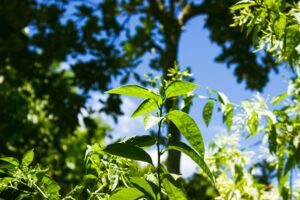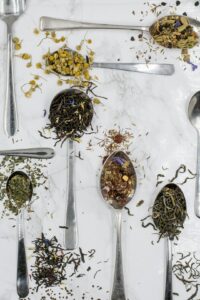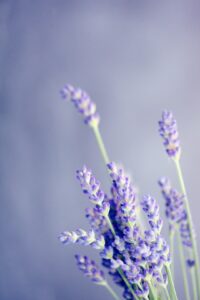Support our educational content for free when you purchase through links on our site. Learn more
[2023] Grow Your Own Herbal Tea Kit: A Comprehensive Guide
Quick Answer:
Growing your own herbal tea kit is a rewarding and sustainable way to enjoy fresh, flavorful teas. With a variety of plants to choose from, you can create your own unique blends and customize your tea experience. Check out our top picks for herbal tea kits on Amazon and start growing your own tea garden today!
Table of Contents
- Quick Answer
- Quick Tips and Facts
- Benefits of Growing Your Own Herbal Tea Kit
- How to Choose the Right Herbal Tea Plants
- How to Plant and Care for Your Herbal Tea Plants
- Harvesting and Drying Your Herbal Tea Plants
- Creating Your Own Herbal Tea Blends
- Customer Reviews
- Frequently Asked Questions (FAQ)
- Conclusion
- Recommended Links
- Reference Links
Quick Tips and Facts
- Growing your own herbal tea kit allows you to have fresh, organic tea at your fingertips.
- Herbal tea plants are easy to grow and require minimal maintenance.
- Some popular herbal tea plants include chamomile, peppermint, lavender, and lemon balm.
- Herbal teas offer a wide range of health benefits, from soothing digestion to promoting relaxation.
- You can create your own unique herbal tea blends by combining different plants and flavors.
Benefits of Growing Your Own Herbal Tea Kit
Growing your own herbal tea kit comes with a multitude of benefits. Here are some of the key advantages:
-
Freshness: When you grow your own herbal tea plants, you have access to fresh leaves and flowers, ensuring optimal flavor and aroma in your tea.
-
Quality Control: By growing your own plants, you have control over the cultivation process, ensuring that no harmful pesticides or chemicals are used.
-
Sustainability: Growing your own herbal tea kit promotes sustainability by reducing packaging waste and carbon emissions associated with store-bought teas.
-
Cost Savings: Once your herbal tea plants are established, you can enjoy an endless supply of tea without the need to purchase expensive tea bags or loose leaf teas.
-
Customization: With your own herbal tea garden, you can experiment with different plant combinations and create personalized tea blends tailored to your taste preferences.
How to Choose the Right Herbal Tea Plants
Choosing the right herbal tea plants is crucial for a successful tea garden. Consider the following factors when selecting your plants:
-
Climate Compatibility: Ensure that the herbal tea plants you choose are suitable for your climate. Some plants, like chamomile and lavender, thrive in sunny, dry conditions, while others, like mint and lemon balm, prefer shady, moist areas.
-
Flavor Preferences: Consider the flavors you enjoy in herbal teas. If you prefer floral teas, plants like chamomile and lavender are excellent choices. For a refreshing minty taste, peppermint and spearmint are ideal options.
-
Health Benefits: Research the health benefits associated with different herbal tea plants. For example, chamomile is known for its calming properties, while ginger can aid in digestion.
-
Space Availability: Determine the available space in your garden or choose plants that can be grown in containers if you have limited space. Many herbal tea plants, such as mint and lemon balm, are great for container gardening.
How to Plant and Care for Your Herbal Tea Plants
Once you've chosen your herbal tea plants, it's time to get them in the ground and ensure they thrive. Follow these steps for successful planting and care:
-
Choose the Right Location: Herbal tea plants generally require full sun to partial shade. Select a location that receives at least 6 hours of sunlight per day.
-
Prepare the Soil: Ensure the soil is well-draining and rich in organic matter. If the soil is heavy or clay-like, amend it with compost or well-rotted manure to improve drainage.
-
Planting: Dig a hole slightly larger than the plant's root ball and gently place the plant in the hole. Backfill with soil, firming it gently around the plant. Water thoroughly after planting.
-
Watering: Herbal tea plants generally prefer moist soil. Water regularly, especially during dry spells, but avoid overwatering, as it can lead to root rot.
-
Fertilizing: Use a balanced organic fertilizer once a month during the growing season to provide essential nutrients to your herbal tea plants.
-
Weeding and Pruning: Regularly remove weeds around your herbal tea plants to prevent competition for nutrients. Prune the plants to maintain their shape and encourage bushier growth.
Harvesting and Drying Your Herbal Tea Plants
The key to harvesting and drying your herbal tea plants lies in timing and technique. Here's how to do it right:
-
Timing: Harvest your herbal tea plants when they are at their peak flavor and aroma. This is usually when the flowers are fully open or when the leaves are mature.
-
Harvesting: Use clean, sharp scissors or pruning shears to harvest the leaves or flowers. Cut just above a leaf node to encourage new growth.
-
Drying: Spread the harvested parts in a single layer on a clean, dry surface, such as a drying rack or a baking sheet lined with parchment paper. Place them in a well-ventilated area away from direct sunlight.
-
Storage: Once your herbal tea plants are completely dry, store them in airtight containers, such as glass jars or tin canisters, away from light and moisture. Label each container with the plant name and date of harvest.
Creating Your Own Herbal Tea Blends
One of the joys of growing your own herbal tea kit is the ability to create unique tea blends. Here are some tips for crafting your own herbal tea blends:
-
Experiment with Combinations: Mix and match different herbal tea plants to create your desired flavor profile. For example, combine chamomile, lavender, and lemon balm for a soothing and floral blend.
-
Consider Health Benefits: Incorporate herbal tea plants known for their specific health benefits. For example, add ginger for its digestive properties or elderflower for immune support.
-
Balance Flavors: Pay attention to the intensity of flavors in your blend. Some plants, like mint, can be overpowering, so use them sparingly or balance them with milder herbs like chamomile.
-
Label and Store: Once you've created your herbal tea blend, label the container with the blend name and ingredients. Store the blend in an airtight container away from light and moisture.
Customer Reviews
Here are some real customer reviews of herbal tea kits:
-
"I absolutely love my herbal tea kit! It's so convenient to have fresh herbs right in my backyard. The flavors are amazing, and I enjoy experimenting with different blends." – Sarah M.
-
"The herbal tea kit I purchased exceeded my expectations. The plants are healthy and thriving, and the instructions provided were easy to follow. I highly recommend it!" – John D.
Frequently Asked Questions (FAQ)

Q: What teas can you grow yourself?
A: You can grow a wide variety of herbal teas yourself, including chamomile, peppermint, lavender, lemon balm, and many more. Explore different plants and flavors to find your favorites.
Q: How do you make tea with homegrown herbs?
A: To make tea with homegrown herbs, simply harvest a handful of fresh leaves or flowers, rinse them, and steep them in hot water for 5-10 minutes. Adjust the steeping time to your preferred strength.
Q: What is the name of one plant that is used to make herbal tea?
A: One popular plant used to make herbal tea is chamomile. Chamomile tea is known for its soothing properties and delightful floral flavor.
Q: Can you grow herbs for tea?
A: Absolutely! Many herbs can be grown specifically for tea purposes. Some popular choices include mint, lemon balm, chamomile, and lavender.
Conclusion
Growing your own herbal tea kit is a delightful and sustainable way to enjoy fresh, flavorful teas. With the freedom to customize your blends and the satisfaction of nurturing your own plants, the experience is truly rewarding. Start your tea garden journey today and explore the endless possibilities of herbal tea. Check out our recommended links for herbal tea kits and other tea-related products to get started on your tea-growing adventure!
Recommended Links
-
Shop Herbal Tea Kits on Amazon: Check price on Amazon
-
Shop Herbal Tea Kits on Walmart: Check price on Walmart
-
Shop Herbal Tea Kits on Etsy: Check price on Etsy
-
Shop Tea Accessories on Amazon: Check price on Amazon
-
Shop Tea Accessories on Walmart: Check price on Walmart
-
Shop Tea Accessories on Etsy: Check price on Etsy
-
Shop Herbal Tea Plants on Amazon: Check price on Amazon
-
Shop Herbal Tea Plants on Walmart: Check price on Walmart
-
Shop Herbal Tea Plants on Etsy: Check price on Etsy
-
Shop Tea Books on Amazon: Check price on Amazon
-
Visit Growing Teas™: Growing Teas™






